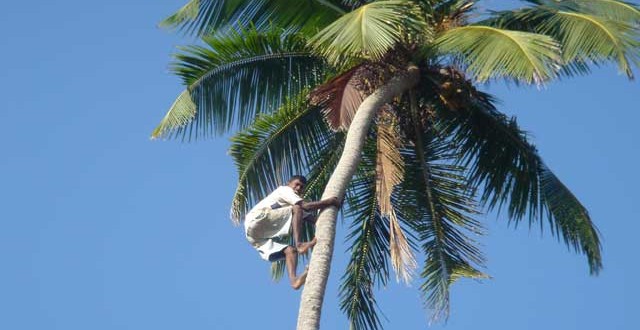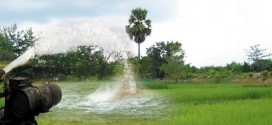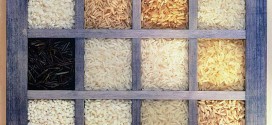1 H.P Pumpset gives a discharge of 2200 gallons/hr. normally. Viz. 22,000 gallons in 10 hrs (1 inch of water in one acre – 1 acre inch). Discharge according to size of pumpset 1 H.P., 1″ x 1″, 1 1/2″ x 1 1/2″ pumpsets – 2,000 – 3,000 gph. 1 1/2 H.P., 1 1/2″ x 1″, 2″ x 1 1/2″ pumpsets – 3,000 – 4,000 gph. 2 H.P., 2″ x 2″, 2 1/2″ 2″, 3″ x 2 1/2″ pumpsets – 5,000 – 6,000 gph. 3 H.P., 2 1/2″ x 2″, 3″ x 2 1/2″ 2″ x 2″ pumpsets – 6,000 – 7,000 gph. 5 H.P., 4″ x 3″, 3″ x 2 1/2″, 2 1/2″ x 2″ pumpsets – 10,000 – 12,000 gph. Working out area and depth of irrigation. Example: 5 H.P. Pumpset. If this pump is worked for 10 hrs, it gives a discharge of 1,10,000 gallons of water approximately. If the area of the farm is five acres, the depth of water will be 1,10,000/22,000 which is five inches (22,000 gallon = 1 inch in one Acre). Precautions to be taken while errecting a pump Maximum suction head shall not exceed 7 mts. (20 ft). Suction head is measured from water surface of source to pump level vertically. Suction pipe shall be erected vertically. It shall never be allowed in a slanting position. There shall not be any leak on the suction side. Foot valve must rest at least 1 mt. above the water bed. If foot valve touches ground, it will such dirt and sand, and pumping system will fail. Polythene pipes are preferable to avoid frictional loss. Usually centrifugal pumps are used where suction is less than 7 mts. A single stage pump is used where total head (suction head + delivery head) isj not more …
Read More »Agriculture
New Varieties
New Varieties of Crops suited for Kerala RICE Varsha Duration 115-120 days (Kharif). 105-110 days (Rabi and Summer) Yield Grain – 3787 kg/ha Straw – 6835 kg/ha Characters Photoperiod insensitive, non-lodging, mid early variety resistant to WBPH and moderately resistant to blue beetles. Low susceptibility to blast and sheath blight under field conditions. Kernel red. long bolo and non-glutinous. Recommended for double crop wet lands of Palakkad and Thrissur. Dhanu Duration 159 days. Yield Grain – 3750 kg/ha Straw – 7188 Kg/ha Characters Photosensitive, Semitall, late maturing variety suitable for second crop season in Onattukara region. Withstand flood and drought conditions. Tolerant to stemborer, moderately tolerant to sheath blight, brown leaf spot, Red Kernel, Resistant to shattering. Chingam Duration 98 days. Yield Grain 3910 kg/ha Characters Non-photosensitive, Semitall, non lodging, early variety suitable for dry sowing in Onattukara region for Virippu season. Moderately tolerant to shealth blight and brown leaf spot. Tolerant to stemborer. Kernel red. Kunjukunju Varna Duration 110-115 days. Yield High Yield Potential Characters Photoperiod insensitive, early maturing, red rice variety. moderately tolerant to major pests like gall fly,leaf folder, whorlmaggot and stemborer. Moderately resistant to blast and moderately susceptible to shealth blight. Non-lodging, non-shattering and responsive to fertilizer. Suitable for double cropped areas of Palakkad, Thrissur and Ernakulam. Kunjukunju Priya Duration 105-110 days Yield High Yield Potential Characters Early maturing red rice. Non-lodging, non-shattering and fertilizer responsive. Moderately resistant to blast. Moderately susceptible to shealth blight. Moderately tolerant to major pests like gall fly, leaf folder, whorl maggot and stem borer. Suitable for double cropped areas of Palakkad, Thrissur and Ernakulam. Gouri Duration 115-120 days. Yield High Yield Potential Characters Medium tillering, dwarf, non-lodging medium duration variety moderately resistant to major diseases and pests. Kernel medium bold and red. Recommended for Kuttanad and Kole regions of Kerala. …
Read More »Topography
Based on the physical features Kerala is classified as given below High Ranges (above 750m MSL) The mountainous land (elevation: 750 m to 2500 m above MSL) along the Western Ghats with jutting rocks and loamy soils constitutes the High Ranges. The two districts of Wayanad and Idukki and the eastern parts of the other districts bordering the Western Ghats come under this class. Most of the reserve forests of the state are in this tract. The important peaks in the Western Ghats are Anamudi (2690 m), Mukunti (2550m) and Nilgiris (2470m). The Palakkad gap with a width of 32 km is the largest pass in the Western Ghats. In addition, there are a few other passes in the Ghats such as Aramboli, kumali, kambam, Thevaram,Bodinaikannuur, karkken, periya and Perambadi. Plantations of tea, coffee, rubber and cardamom dominate the High Range region. High land (75-750m above MSL) This hilly tract on the western side of Western Ghats, comprising about 43 per cent of the land and supporting 14 per cent of the population, is covered with forests and small streams. Plantations of tea, coffee, cardamom and rubber are common. The soils are generally forest loams, which show wide variation in depth with a very high percentage of organic matter. A large percentage of the population of hill tribes lives in this region. Midland (7.5-75m above MSL) The midland plains comprising about 42 per cent of the land mass have an undulating terrain intersected by numerous rivers, small hills and valley and 59 per cent of the state’s population live in this tract. The soil is mainly laterite and supports an intense diversity of seasonal, annual and perennial crops like rice, sugarcane, tapioca banana, ginger, coconut, arecanut, pepper, cashew, rubber etc. Lowland (Up to 7.5m above MSL) The lowland bordering the …
Read More » Karshika Keralam – A site for Agricultural Enthusiasts
Karshika Keralam – A site for Agricultural Enthusiasts


